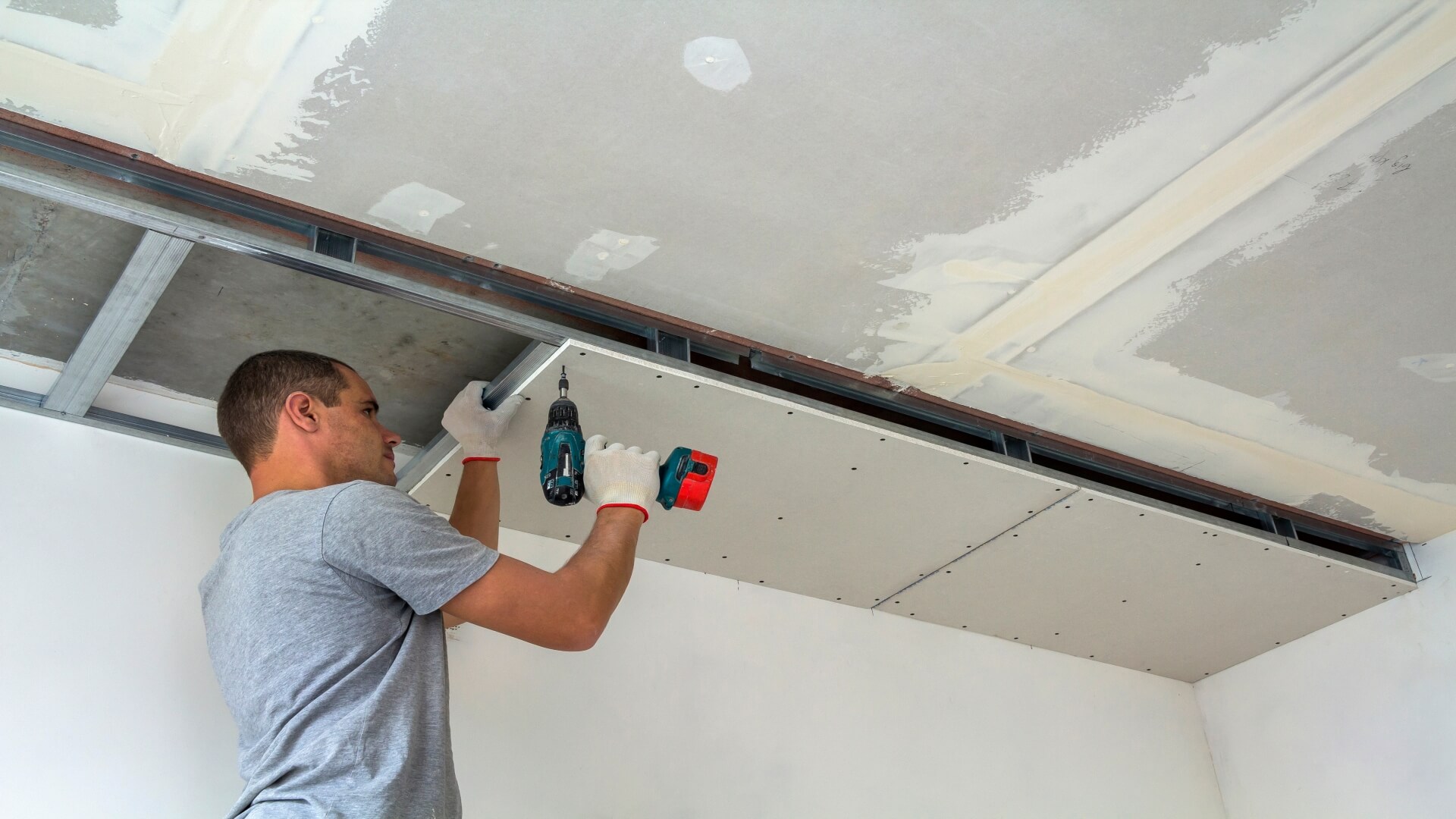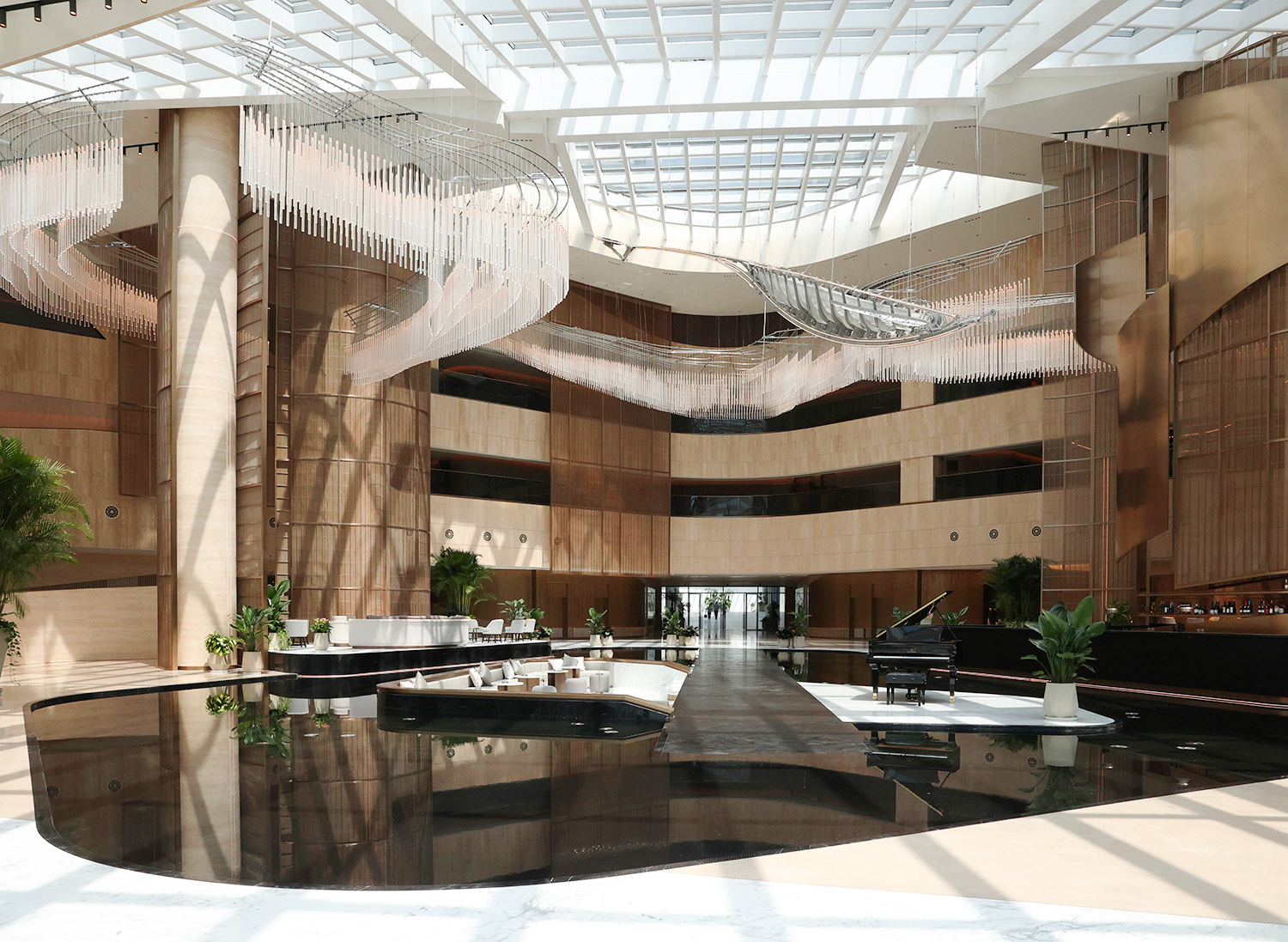The suspended ceiling, or dropped ceiling, that hangs above you in your office is not a new feature of interior design. The history of this design is quite fascinating! This architectural concept can be traced back as far as 14th century Japan, when simple wooden planks created an airy aesthetic. Even the Blackfriars Theatre in London was built with suspended ceilings in 1596 to aid the acoustics of the room. The modern suspended ceilings that we recognise today were developed in America in the early 1920s. The support of a grid system was developed in 1950 with the ability to install fully accessible suspended ceilings making an appearance in the year 1958. Clearly, suspended ceilings have been here for a long time, and these seasons interior features are here to stay.
Where are you most likely to see a suspended ceiling?
Usually, suspended ceilings are out to use in commercial settings. Why? They are especially convenient, with the useful unused space above the ceiling – this area is a great way of maximises floor space as it can be used to story all kinds of items. It can also be useful when designed an upmarket atmosphere that looks professional but doesn’t cost the earth.
What can be stored in this useful void above the ceiling?
Commonly, components like plumbing and electric services, like heat air-condition and ventilation systems, are stored in this space. Light fitting, sprinklers and other safety equipment is also often found in this space, elevating the health and safety standards of the room. WIFI systems can also find a home here, along with the cabling required for computer networks or telephone systems. In an age where every area needs a good internet connection, this kind of useful space is highly valuable to a busy office.
The Principles of Installation
While the concept of a suspended ceiling seems simple, the process involved in designing, creating, and installing the ceiling can be quite intricate. Therefore, getting the help of a seasoned, experienced expert can really make the process a whole lot easier and a lot less stressful! Companies like UK-based Western Industrial have specialised in these kind of installations for decades and will help guide you through every step of the process so you don’t feel overwhelmed by the work involved. So, what us the process of installing a suspended ceiling?
First, careful measurements need to be taken in order to produce an accurate and precise plan of the room. From this information, the ceiling designers can then draw out a ceiling grid – this will form the framework that the rest of the whole project will rest on. Next, the installer needs to mark the walls of the perimeter to show where the drop from the main ceiling will fall, in accordance with the design plan. When this vital measurement has been confirmed, the rest of the project will run a lot smoother.
There are a variety of materials and fixings that can be used to support the ceiling, and all depends on the purpose and build of the existing structure. Once the ceiling grid is confirmed and installed, the technical team can move in to start the process of fitting and testing the systems that will be stored in the void. Once these various systems have been set up, the ceiling tiles can be added. These can be created from a variety of colours and materials in a number of different sizes and styles. These tiles form the basis of the aesthetic feel of the whole ceiling and can really add to the style and class of the interior.

































